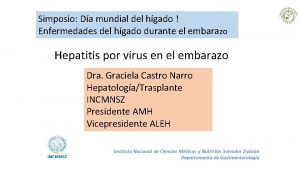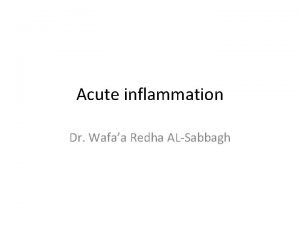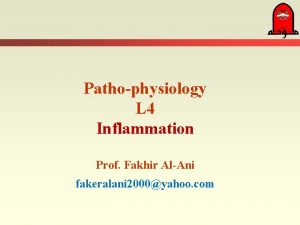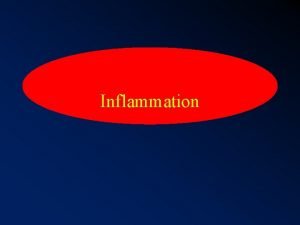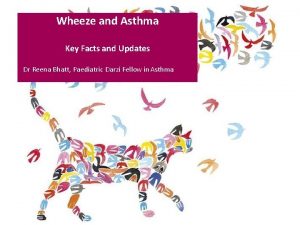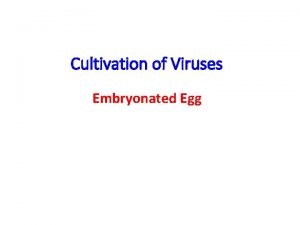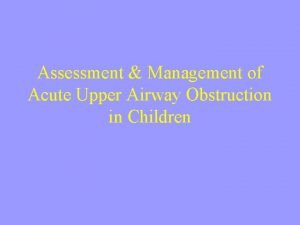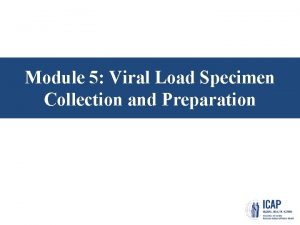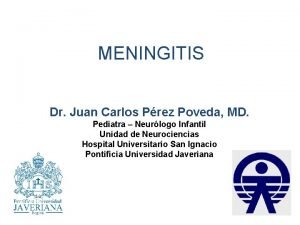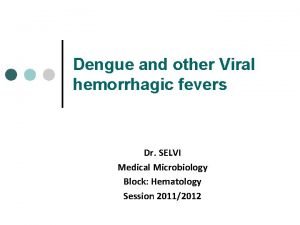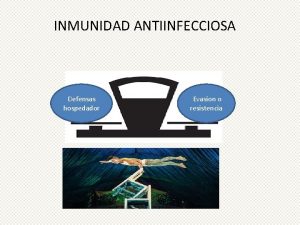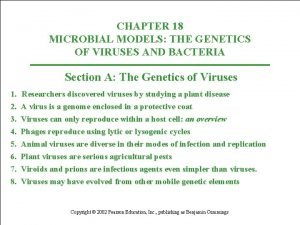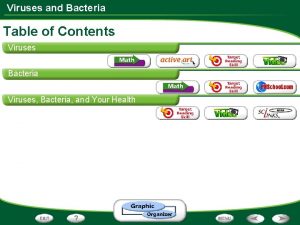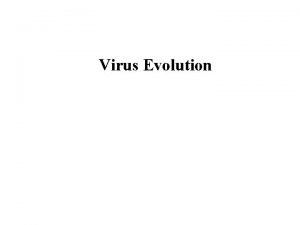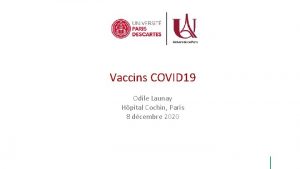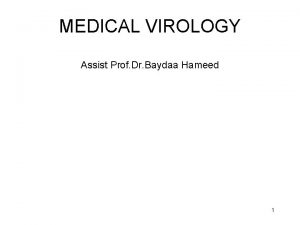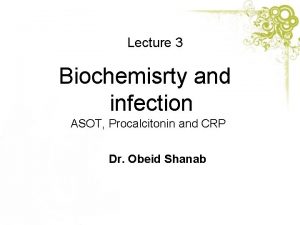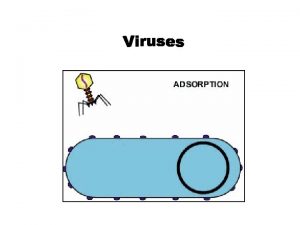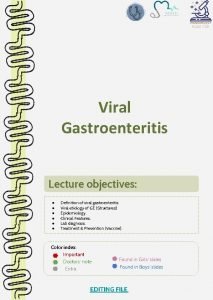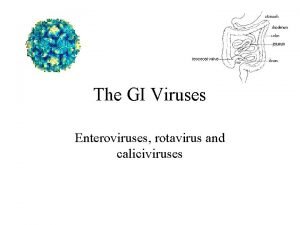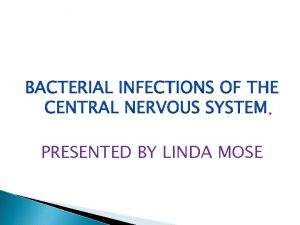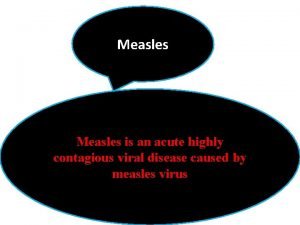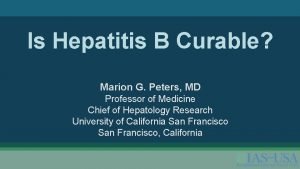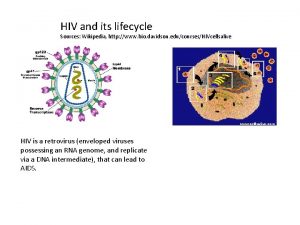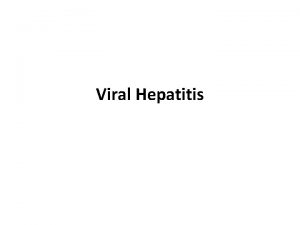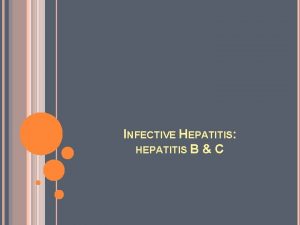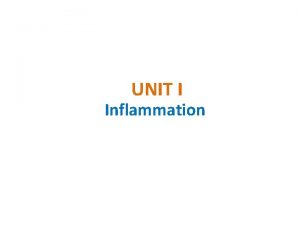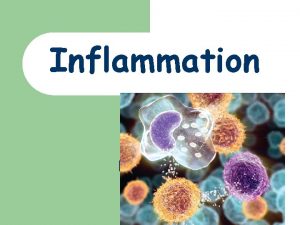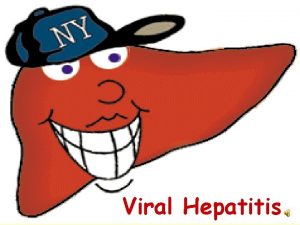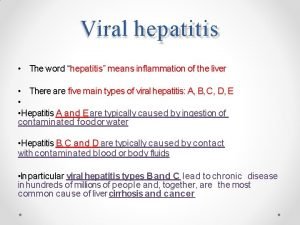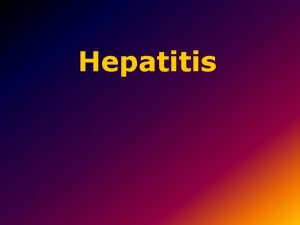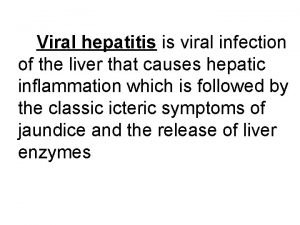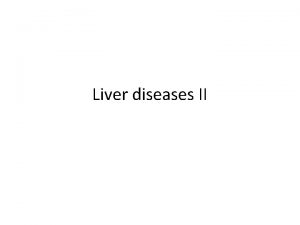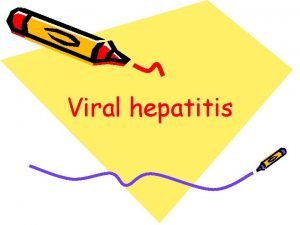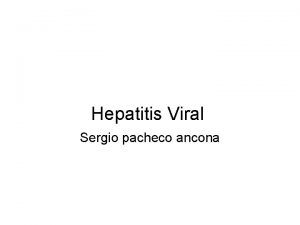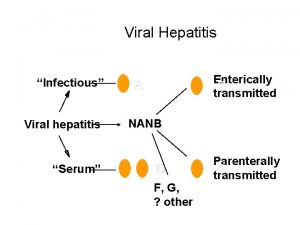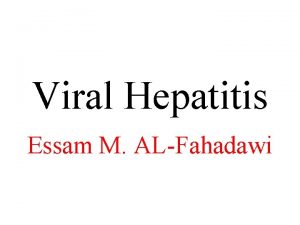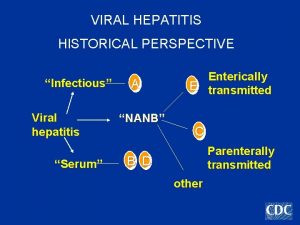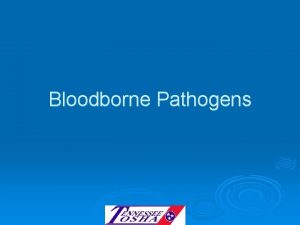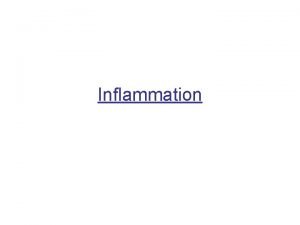Viral hepatitis DEFINITION Viral Hepatitis Inflammation of Liver






































- Slides: 38

Viral hepatitis

DEFINITION Viral Hepatitis Inflammation of Liver caused by viral infection.

VIRUSES Hepatotropic viruses (Five types of Hepatitis Virus have been identified). HAV, HBV, HCV, HDV, HEV Others: HGV: Hepatitis G Virus TTV: Transfusion Transmitted Virus CMV: Cytomegalovirus EBV: Epstein-Barr Virus

HEPATITIS A VIRUS (HAV) Picornavirus single- stranded RNA genome, Single serological type: Anti-HAV-Ig. M and Anti-HAV-Ig. G Single antigen-antibody system Replication - cytoplasm of liver cells.

EPIDEMIOLOGY Most common Viral Hepatitis Route of spread : Faeco-oral Patient remains infectious 2 weeks prior to & for upto 1 week after onset of illness Overcrowding & Poor Sanitation No carrier state

CLINICAL F E A TUR E S Incubation period 15 – 45 days Asymtomatic (90%): Clinically silent Nonspecific: Anorexia Nausea Vomiting Symptomatic (10%): Jaundice, Dark urine & Pale stools

CLINICAL COURSE Recovery: 3 – 6 weeks Extrahepatic complications: Arthritis, Vasculitis, Myocarditis Renal failure Fulminant Hepatitis: Very Rare

DIAGNOSIS Anti HAV Ig. M +ve: Acute infection Disappears within 3 months of recovery. Anti HAV Ig. G is of no diagnostic value as it persists years after infection.

TREATMENT No specific antiviral treatment needed. Patients recover spontaneously. Conservative management : Diet : rich in carbohydrate. During this period, the bowels should be cleaned daily with lukewarm water enema. Avoid: Alcohol, Fried and fatty foods Adequate rest.

PREVENTION Vaccine - Formalin inactivated(to be given to person travelling to endemic zone) 2 doses 0, 6 -12 months IM deltoid or gluteal Protection period 25 yrs in adult & 15 – 20 yrs in children

HEPATITIS B VIRUS (HBV) DNA virus (hepadnavirus). Complete virus particle is named Dane-particle, Genome is composed of incomplete doublestranded DNA. Dane’s particle

TRANSMISSION Body fluids contain viral particles Semen, vaginal secretions, Blood, Saliva HORIZONTAL TRANSMISSION • Parenteral: Blood & blood products • Sexual VERTICALTRANSMISSION • Hbs Ag – positive mothers to newborn

HIGH RISK GROUP Multiple sex partners IV drug abusers Hemodialysis patients Patients requiring repeated blood transfusions Hemophilia Thalassemia Health care workers

SEROLOGICAL MARKERS HBs. Ag: Marker of infectivity Anti-HBs: Marker of immunity HBc. Ag: No commercial test available. Anti-HBc: Marker of past or current infection. Ig. M anti-HBc: Recent infection. Ig. G anti-HBc: Older infection. HBe. Ag: Marker of high degree of infectivity. Anti-HBe: May be present in infected or immune person.

Acute HBV Infection with Recovery TYPICAL SEROLOGIC COURSE HBe. Ag Symptoms anti-HBe Total anti-HBc Titer 0 4 anti-HBs Ig. M anti-HBc HBs. Ag 8 12 16 20 24 28 32 36 Weeks after Exposure 52 100

CLINICAL COURSE

ACUTE ICTERIC HEPATITIS Incubation period - 70 days (30 - 180 days); Four clinical stages: incubation period, prodromal phase (pre-icteric phase), icteric phase convalescence.

P R E - I C T E R I C PHASE Symptoms are nonspecific; Moderate fever Headache Malaise and weakness Anorexia, nausea, vomiting A vague, dull, right upper quadrant pain.

I C T E R I C PHASE Clinical features of icteric phase: Symptoms of pre-icteric phase being mild; Jaundice (dark urine, skin and scleral icterus); Stool light or clay colored; Hepatomegaly Liver function abnormalities �ALT and AST �Bilirubin (direct & indirect)

DIAGNOSIS SEROLOGY HBs. Ag Anti HBc. Ag. Ig. M HBV DNA by PCRis mostsensitive test

COM P LI CA TI ON S Fulminant Hepatitis Chronic Hepatitis Rare complications: Pancreatitis, Myocarditis Atypical pneumonia Aplastic anemia Transverse Myelitis

CHRONIC HEPATITIS B Chronic viral hepatitis: Inflammatory disease of the liver > 6 months. CLINICAL FEATURES Fatigue, anorexia, abdominal distension, diarrhea are common, but they are fluctuant. Hepatomegaly, splenomegaly, hepatic facies, liver palms, spider angioma can be seen.


DIAGNOSIS HBs. Ag positive > 6 months Anti-HBc Ig. G in blood Serum HBV DNA > 105 copies/ml HBe. Ag or Anti HBe. Ag may be present

TREATMENT DRUGS : Interferon-alfa Lamivudine : 100 mg OD 48 weeks Adefovir : 10 mg OD 48 weeks Entecavir Telbivudine Liver Transplantation

PREVENTION HBVVaccine DNA Recombinant vaccine IM (deltoid but not gluteal) 3 doses 0, 1, 6 Duration of protection – 5 to 10 yrs

POST-EXPOSURE PROPHYLAXIS Combination of HBIG & HB vaccine (24 hrs) PERINATAL PROPHYLAXIS OF INFANTS HBIG 0. 5 ml IM in thigh immediately after birth Full course of HB vaccine started within 12 hrs of birth

HEPATITIS C • Flaviviridae family. Single-stranded, positive-sense RNA virus, • Also known as “Non A Non B Hepatitis” • Route of transmission: Similar to HBV • Risk of Chronic Infection Intravenous drug abuse 95% Vertical transmission 3% Needle stick injury 3%

CLINICAL FEATURES Incubation period: 50 days (15 – 150 days) 90% : Asymptomatic 10%: Mild flu like illness with jaundice & raised serum amino transferrases Extrahepatic Manifestation : Arthritis Glomerulonephritis

DIAGNOSIS HCVRNA detected in 1– 2 weeks after infection Anti HCVis + ve 6 weeks after infection CLINICAL COURSE 85% : Chronic liver disease 15– 20% : Cirrhosis in 10 – 30 yrs 7– 15%of cirrhosis patient: Hepatocellular carcinoma

TREATMENT For CHC: IFN-α + Ribavirin 6 – 12 months Side Effects Ribavirin: Hemolytic anemia Interferon: Flu like symptoms Liver Tranplantation in Cirrhosis

HEPATITIS D VIRUS (HDV) Delta virus Incomplete defective RNAvirus. Requires coating of hepatitis B surface antigen (HBs. Ag) for entry into and exit from the hepatocyte. DIAGNOSIS: HDV- Ag and Anti-HDV in serum Route of transmission: Similar to HBV

HBV - HDV COINFECTION Typical Serologic Course Symptoms ALT Elevated Titre anti-HBs Ig. M anti-HDV RNA HBs. Ag Time after Exposure Total anti-HDV

HBV - HDV SUPERINFECTION Typical Serologic Course Jaundice Symptoms Titre Total anti-HDV ALT HDV RNA HBs. Ag Ig. M anti-HDV Time after Exposure

HEPATITIS D PREVENTION Hepatitis D can be prevented by vaccinating susceptible persons with Hepatitis B vaccine

HEPATITIS E VIRUS(HEV) Single-stranded RNA, At least four Genotypes. Enterically trasmitted by contaminated water “Enterically Transmitted Non A Non B Hepatitis” Symptoms similar to Hepatitis A Self Limiting & no progression to chronic liver disease Incubation period: 40 days (15 – 60 days)

DIAGNOSIS ELISA for Ig. M & Ig. G anti HEV RNA in serum or stool PREVENTION No vaccine available

Thank you
 Hgado
Hgado Acute inflammation definition
Acute inflammation definition Acute inflammation definition
Acute inflammation definition Acute inflammation definition
Acute inflammation definition Cardinal features
Cardinal features Viral induced wheeze vs asthma
Viral induced wheeze vs asthma Vrus
Vrus Section 24-1 viral structure and replication
Section 24-1 viral structure and replication Viral replikasyon basamakları
Viral replikasyon basamakları Method of cultivation of virus
Method of cultivation of virus Viral inoculation in embryonated egg
Viral inoculation in embryonated egg Virus cultivation in embryonated eggs
Virus cultivation in embryonated eggs Spasmodic croup
Spasmodic croup Variola varicela
Variola varicela Decapsidação
Decapsidação Viral load sample collection
Viral load sample collection Meningitis
Meningitis Causes of viral hemorrhagic fever
Causes of viral hemorrhagic fever Inmunidad
Inmunidad Capsid capsomere
Capsid capsomere Viral
Viral Viral recombination
Viral recombination Vaccins à vecteur viral
Vaccins à vecteur viral Viral receptors
Viral receptors Procalcitonin
Procalcitonin Rhinopneumonitis definition
Rhinopneumonitis definition Virus dna
Virus dna Dha mcq
Dha mcq Viral entry
Viral entry The dynamics of viral marketing
The dynamics of viral marketing Csf findings in different meningitis
Csf findings in different meningitis Viral arthritis
Viral arthritis An acute highly contagious viral disease
An acute highly contagious viral disease Viral life cycle
Viral life cycle Antiperytique
Antiperytique Viral shedding
Viral shedding Eline's viral
Eline's viral Andrew lippman mit
Andrew lippman mit Viral integration
Viral integration
